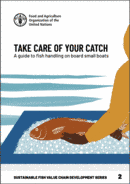Markets for Canning
Demand for the product is likely to rise due to increased product consumption owing to health benefits coupled with the adoption of sustainable fish farming techniques adopted by the manufacturers. In addition, advantages offered by this product, including extended shelf life and ease in cooking, are anticipated to drive growth. Canned tuna emerged as one of the widely consumed products in industry on account of its superior properties, such that it is a rich source of lean proteins. In addition, other nutrients offered by the product, such as omega 3 fatty acid, that results in the improvement of personal health, is anticipated for increase the consumption. Sophisticated performance, reduction in the cost, superior quality and use of advanced technologies are anticipated to be major characteristics of the players in the market.
The market perception of canned products is important and addressing issues listed below will assist in reducing food loss and waste (FLW) associated with the withdrawal from the market of dangerous and sub-standard products.
- Physical contamination
- Presence of Parasites
- Extremely poor quality
- Incorrect labeling (fraudulent practices)
- Damaged cans
- Seam defects
Drive for Certification and Value Addition
Drive for Certification and Value Addition
With the increasing role of supermarkets in the distribution of canned tuna and the demand for product differentiation through eco-labelling, tuna processors in Spain are trying to obtain such labelling. There are already twenty six companies that produce products with eco-label certificates in Spain. There is also a major demand in the Spanish market towards product certification and quality management system certification through food safety standards. Achieving certification is likely to strengthen best practices and contribute to control or reduction of FLW.
It is clear that this value added domestication attempt is a complex process that presents challenges not only technical, commercial and financial, but will also require an arrangement with the key distributors of canned sardines in the European market. Integrating distributors is a key imperative for product promotion on the European market and for capturing a portion of value addition created in this area. End markets buyers are a powerful relay and an incentive for change. They also represent an important source of information on demand and can convey learning. In some cases, they are willing to invest in businesses downstream of the value chain.
Key Publications
Canned Seafood Market Analysis By Product Overview of market trend for canned seafood to 2025. |
| |
Overview of South Africa canned fish trade and food safety issues. | ||
By-products of tuna processing The tuna loin and canning industry generates a considerable amount of by-products. As the utilization of these by-products varies in different geographical regions, this publication explores utilization from Asia, Europe and Latin America. |
More Resources
More Resources
31 October 2023














